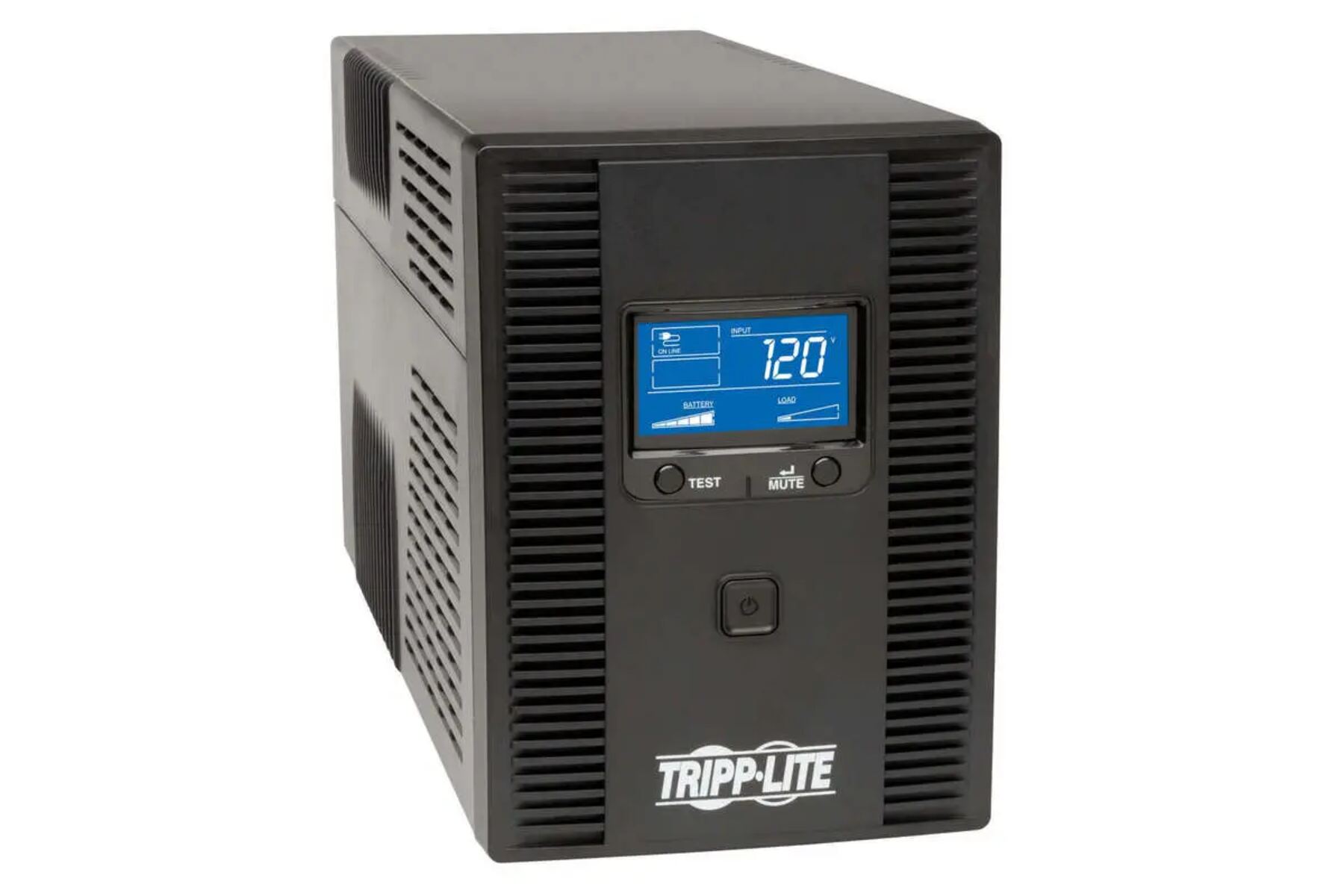Introduction
Welcome to our guide on how to tell if your UPS (Uninterruptible Power Supply) battery is going bad. A UPS is a vital piece of equipment that provides backup power to your electronic devices during a power outage or fluctuation. It ensures that your devices remain operational and prevents critical data loss or damage.
However, like any other battery, UPS batteries have a limited lifespan and can deteriorate over time. It is crucial to keep an eye on the health of your UPS battery to ensure its reliability and effectiveness when you need it the most.
In this article, we will discuss the common signs that indicate a failing UPS battery and provide you with practical methods to assess its health. By understanding these indicators, you can take proactive steps to prevent power disruptions and safeguard your valuable equipment.
It is essential to note that while this guide will assist you in gauging the condition of your UPS battery, it is always advisable to consult the manufacturer’s instructions and guidelines for specific details and recommended maintenance procedures.
Now, let’s dive into the common signs that may indicate your UPS battery is nearing the end of its lifespan.
Common Signs of a Failing UPS Battery
As your UPS battery ages, it may start to show signs of deterioration. Recognizing these signs can help you take timely action to replace the battery and prevent potential power interruptions. Here are some common indicators of a failing UPS battery:
- Inconsistent Runtime: If you notice that your UPS is providing significantly less backup power than it used to, it could be a sign that the battery is deteriorating. Over time, a failing battery will have reduced capacity, resulting in a shorter backup runtime.
- Frequent Trips: A healthy UPS battery should be able to handle power fluctuations and outages seamlessly. However, if your UPS trips frequently or fails to provide uninterrupted power, it may indicate an underlying issue with the battery.
- Excessive Noise and Heat: Unusual noises such as buzzing, clicking, or excessive heat emanating from the UPS can be a warning sign of battery problems. These symptoms may arise due to internal battery damage or overcharging.
- Visible Battery Bulging or Leakage: Inspect the UPS battery for any visible signs of damage, such as bulging or leakage. Bulging or swollen batteries indicate internal pressure buildup, while leakage may be a result of a damaged cell. Both of these issues indicate a failing battery.
- Diminished Charge Holding Capacity: If the UPS battery cannot hold a charge for an extended period, even after being fully charged, it may be a sign that the battery is deteriorating. This reduced charge capacity can impact the effectiveness of the UPS during power outages.
These are just a few of the common signs that may indicate a failing UPS battery. It is crucial to monitor your UPS regularly and address any issues promptly to ensure the reliability and performance of your backup power system. In the following sections, we will explore various methods to assess the health of your UPS battery and determine if it requires replacement.
How to Assess the Health of Your UPS Battery
To determine the condition of your UPS battery, you can perform a few straightforward assessments. These methods will help you evaluate the health and effectiveness of your battery, allowing you to make an informed decision regarding its replacement. Here are some ways to assess the health of your UPS battery:
- Testing the UPS Battery Voltage: Using a multimeter, measure the voltage of the UPS battery when it is at full charge. Compare the reading to the manufacturer’s recommended voltage range. If the voltage is significantly lower than the specified range, it may indicate a deteriorating battery.
- Checking for Battery Bulging or Leakage: Physically inspect the UPS battery for any signs of bulging or leakage. If you notice any abnormalities, it is a strong indication that the battery needs replacement.
- Listening for Unusual Sounds: During normal operation, your UPS should not emit excessive noise. If you hear loud buzzing, clicking, or hissing sounds coming from the UPS, it could be due to a failing battery. In such cases, consider replacing the battery as soon as possible.
- Observing Backup Runtime: Test the UPS by disconnecting it from the power source and running your equipment solely on battery power. Monitor the backup runtime and compare it to the manufacturer’s estimated runtime. If the UPS fails to provide the expected duration of backup power, it may be an indication of a deteriorating battery.
- Interpreting Error Messages or Warning Lights: Modern UPS systems often include error messages or warning lights to alert users of any potential battery issues. Consult the user manual or manufacturer’s documentation to understand the meaning of these notifications and take appropriate action accordingly.
- Utilizing Software or Built-in Diagnostics: Some UPS models have built-in diagnostics or software tools that provide detailed information about the battery’s health and performance. Use these tools to assess the battery’s condition and determine if replacement is necessary.
By utilizing these assessment methods, you can effectively evaluate the health of your UPS battery. It is important to note that while these techniques provide a good indication of battery health, consulting the manufacturer’s guidelines and recommendations remains crucial for accurate assessment and appropriate action.
Testing the UPS Battery Voltage
One of the most straightforward methods to assess the health of your UPS battery is by measuring its voltage. This test helps determine if the battery is holding a charge within the recommended range. Here’s a step-by-step guide on how to test the UPS battery voltage:
- Prepare the Multimeter: Set your multimeter to the DC voltage setting and make sure it is properly calibrated. Depending on your multimeter model, select the appropriate voltage range to measure the battery’s voltage.
- Fully Charge the Battery: Ensure that your UPS battery is fully charged. Plug the UPS into the power source and allow the battery to charge for a sufficient amount of time, as recommended by the manufacturer.
- Disconnect the UPS from the Power Source: Safely disconnect the UPS from the mains power. This is important to isolate the battery and obtain accurate voltage readings without interference.
- Attach the Multimeter Probes: Connect the red (+) probe of the multimeter to the UPS battery’s positive terminal, and the black (-) probe to the negative terminal. Ensure a secure connection to obtain accurate readings.
- Take the Voltage Reading: With the multimeter probes securely connected, observe the voltage reading displayed on the multimeter’s screen. Compare this reading to the manufacturer’s recommended voltage range for your specific UPS battery model.
- Interpret the Results: If the voltage reading falls within the manufacturer’s recommended range, it indicates that the UPS battery is holding a charge effectively. However, if the voltage reading is significantly lower or higher than the specified range, it suggests a deteriorating battery that may need replacement.
Regularly testing the UPS battery voltage allows you to monitor its performance and detect any potential issues in advance. Remember to consult the manufacturer’s guidelines and documentation for specific voltage range specifications, as they may vary depending on the UPS battery model.
Checking for Battery Bulging or Leakage
Physical inspection is an essential method to assess the condition of your UPS battery. By checking for signs of bulging or leakage, you can identify potential issues that indicate a failing battery. Follow these steps to check for battery bulging or leakage:
- Power Off the UPS: Before inspecting the battery, ensure that the UPS is powered off and disconnected from the electrical outlet to avoid any electrical hazards.
- Locate the Battery Compartment: Depending on your UPS model, the battery compartment may be located on the front or rear panel. Refer to the manufacturer’s documentation for the precise location.
- Visually Inspect the Battery: Carefully examine the UPS battery for any signs of bulging or swelling. A healthy battery should have a flat and uniformly shaped exterior. If you notice any distortion, bulging, or an uneven surface, it is a strong indication of internal pressure buildup.
- Check for Leakage: While inspecting the battery, check for any signs of leakage, such as fluid or residue around the battery terminals. Leakage can indicate a damaged cell or a breach in the battery casing.
- Observe Battery Terminals: Inspect the battery terminals for corrosion or buildup. Damaged or corroded terminals can disrupt the connection and affect the battery’s performance. If necessary, clean the terminals with a soft cloth or a mild cleaning solution.
If you notice any significant bulging, leakage, or terminal damage, it is recommended to replace the UPS battery as soon as possible. Ignoring these signs can lead to further battery deterioration and potential safety risks. Remember to consult the manufacturer’s recommendations and guidelines for proper battery replacement procedures specific to your UPS model.
Listening for Unusual Sounds
When assessing the health of your UPS battery, listening for unusual sounds can provide valuable insights into its condition. Certain sounds can indicate internal issues or potential battery failure. Follow these steps to effectively listen for any abnormalities:
- Power on the UPS: Ensure that the UPS is powered on and in normal operation before listening for sounds. Make sure all connected devices are turned off to eliminate external noises.
- Listen for Buzzing or Clicking Sounds: Pay close attention to any buzzing or clicking sounds emanating from the UPS. These can indicate internal components struggling to function correctly or experiencing excessive strain.
- Be Aware of Hissing or Fizzing Noises: Unusual hissing or fizzing sounds may indicate a leaking or damaged battery. These sounds can be caused by the release of gas or electrolyte from the battery cells. In such cases, it is essential to address the issue promptly and consider replacing the battery.
- Place Your Ear Close to the UPS: To identify subtle sounds, place your ear near the UPS or the battery compartment. This allows you to detect any unusual vibrations or noises that may not be audible from a distance.
- Record and Compare: If you notice any sounds that are out of the ordinary, it can be helpful to record them for future reference. This allows you to compare and assess any noticeable changes or escalating issues over time.
Listening for unusual sounds is a simple yet effective method for determining the health of your UPS battery. If you hear any persistent or concerning sounds, it is advisable to consult the manufacturer’s documentation or seek professional assistance to ensure the safe and reliable operation of your UPS.
Observing Backup Runtime
One of the practical ways to assess the health of your UPS battery is by observing its backup runtime. The backup runtime refers to the duration for which your UPS can provide power to connected devices during a power outage. By monitoring the backup runtime, you can evaluate the effectiveness and capacity of the battery. Here are the steps to effectively observe the backup runtime:
- Fully Charge the UPS Battery: Ensure that your UPS battery is fully charged before conducting the backup runtime observation. Plug the UPS into the electrical outlet and allow the battery to charge as recommended by the manufacturer.
- Connect Devices to the UPS: Connect your critical devices to the UPS, such as a computer, server, or network equipment. This ensures that you are simulating a realistic scenario where the UPS is supporting your essential equipment during a power outage.
- Simulate a Power Outage: Safely disconnect the UPS from the electrical outlet while keeping the connected devices powered on. This simulates a power outage, and the UPS should automatically switch to battery power.
- Monitor the Backup Runtime: Keep track of the time it takes for the UPS to exhaust its battery and shut down. This duration represents the backup runtime of the battery. Compare it to the manufacturer’s estimated runtime or the information provided in the UPS specification.
- Maintain a Record: Regularly record the observed backup runtimes and compare them over time. If you notice a significant decrease in the runtime, it may indicate a deteriorating battery that requires attention.
Observing the backup runtime allows you to gauge the battery’s capacity and its ability to provide uninterrupted power during an outage. If you find that the backup runtime is significantly shorter than the manufacturer’s specifications or if it is decreasing over time, it is advisable to consider replacing the battery to ensure reliable backup power.
Interpreting Error Messages or Warning Lights
Many UPS systems incorporate error messages or warning lights to provide valuable information about the status and health of the battery. Understanding and interpreting these notifications can help you identify potential issues and take appropriate action. Here’s how to effectively interpret error messages or warning lights on your UPS:
- Refer to the User Manual: Consult the user manual or manufacturer’s documentation that accompanied your UPS. It should provide a list of error messages and warning lights specific to your UPS model.
- Identify the Error Messages: When an error condition occurs, the UPS may display a specific error code or message. Take note of the message being displayed or any alphanumeric codes associated with the error.
- Understand the Meaning: Refer to the user manual to understand the meaning of the error message or warning light. It will provide a detailed explanation of the issue and the appropriate steps to resolve it.
- Take Action Accordingly: Depending on the error message or warning light, the recommended action may vary. It could involve tasks such as replacing the battery, connecting the UPS to a stable power source, or contacting technical support for further assistance.
- Document the Error: Keep a record of the error messages or warning lights encountered and the actions taken to resolve them. This documentation will help you track recurring issues and aid in future troubleshooting.
Interpreting error messages or warning lights on your UPS is crucial for understanding the specific issues affecting the battery’s health. By following the instructions provided in the user manual and taking the appropriate actions, you can effectively address any identified problems and ensure the proper functioning of your UPS.
Utilizing Software or Built-in Diagnostics
Many modern UPS models are equipped with software or built-in diagnostics that provide detailed information about the health and performance of the battery. These tools offer valuable insights into the UPS system and can help you assess the condition of the battery accurately. Here’s how you can utilize software or built-in diagnostics to evaluate your UPS battery:
- Check the Manufacturer’s Resources: Consult the manufacturer’s website or user manual to identify if there is any software or diagnostic tool available for your UPS model. Download and install the recommended software, if applicable.
- Connect the UPS to your computer: Connect the UPS to your computer using a USB cable or any other interface specified by the manufacturer. Ensure that the UPS is recognized by your system.
- Launch the Software: Open the software application provided by the manufacturer. It may be a standalone program or a web-based interface. Follow the instructions to establish a connection between the software and your UPS.
- Access Battery Information: Within the software or diagnostic tool, locate the section that displays battery information. This may include details like battery voltage, charge level, discharge rate, and estimated remaining runtime.
- Review Health and Performance Metrics: Explore the software or diagnostic tool to access additional health and performance metrics specific to the battery. For example, you may be able to view historical data, performance trends, and alerts related to battery health.
- Act on the Recommendations: If the software or diagnostics highlight any potential issues with the battery, follow the recommended actions provided. This may involve recalibrating the battery, scheduling a self-test, or seeking professional assistance.
By utilizing software or built-in diagnostics, you can gain a deeper understanding of your UPS battery’s health and performance. These tools offer real-time data and insights that help you make informed decisions regarding battery maintenance, replacement, or further troubleshooting.
Final Thoughts
Monitoring the health of your UPS battery is essential to ensure the reliability and effectiveness of your backup power system. By recognizing the common signs of a failing UPS battery and utilizing the methods discussed in this guide, you can proactively assess and maintain the battery’s condition.
Regularly testing the UPS battery voltage, checking for bulging or leakage, listening for unusual sounds, observing the backup runtime, interpreting error messages or warning lights, and utilizing software or built-in diagnostics are all valuable techniques that can help you assess the health of your UPS battery.
Remember to consult the manufacturer’s guidelines and instructions specific to your UPS model for accurate assessment and appropriate actions. This will ensure that you follow the recommended procedures and make informed decisions regarding battery maintenance or replacement.
If you suspect that your UPS battery is nearing the end of its lifespan or facing significant issues, it is advisable to consult a professional technician or contact the manufacturer’s technical support for assistance. They can provide expert advice and guidance tailored to your UPS model, ensuring the safe operation of your equipment.
By staying proactive in monitoring the health of your UPS battery, you can prevent unexpected power disruptions, protect your valuable electronic devices, and maintain uninterrupted productivity. Regular maintenance and timely battery replacements will help you maximize the lifespan and efficiency of your UPS system, providing you with peace of mind during power outages or fluctuations.

























